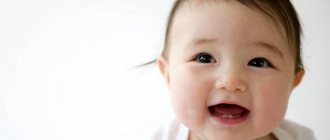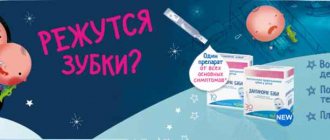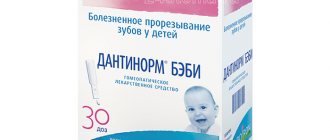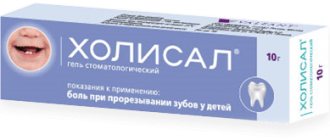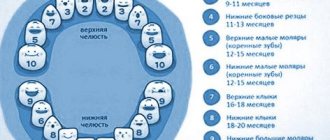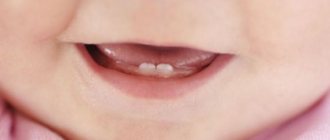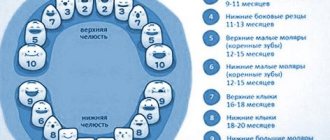April 5, 2020
Diathesis is not just an allergy, but a predisposition of the body to the occurrence of diseases and pathological reactions that manifest themselves mainly in childhood. This is a special condition accompanied by the child’s tendency to:
- to allergic reactions;
- frequent colds and respiratory infections;
- metabolic disorders;
- changes in immunological reactivity.
With diathesis, an inadequate response of the body to normal environmental influences (irritants) is observed. But such reactions occur with an unfavorable combination of several provoking factors: errors in nutrition, poor diet, improper care, frequent infections, etc.
The most common type of diathesis is exudative-catarrhal. It is this that manifests itself in the form of allergic dermatitis. The first signs appear as early as 3-6 months and can remain until 1-2 years, when in most children all symptoms of diathesis disappear.
The main signs that manifest exudative-catarrhal diathesis are:
- “gneiss” – peeling and seborrheic crusts on the scalp;
- redness, peeling and thickening of the skin of the cheeks (“milk scab”);
- itchy nodules (“strophulus”);
- diaper rash of large folds.
Indications for use
The product for internal use is indicated in the following cases:
- allergies (urticaria, year-round allergic runny nose, allergic reaction to medications and food);
- itching of the skin caused by eczema, rubella, dermatoses, insect bites;
- for preventive purposes.
The drug in the form of an emulsion and gel is used for:
- itchy skin;
- various burns.
Despite the fact that the medicine can be bought without a prescription from a specialist, it should only be used as prescribed by a doctor.
How do medications work?
All drugs that are used to relieve the unpleasant symptoms of teething can be divided into several groups:
- local remedies (gels, ointments, creams);
- anti-inflammatory and painkillers for oral administration in the form of drops;
- homeopathic medicines.
The effect of anesthetic ointments and gels is based on the fact that they most often contain anesthetic substances (for example, lidocaine), which block pain receptors on the surface of the gums. Additionally, they may contain anti-inflammatory ingredients and plant extracts that eliminate inflammatory symptoms during teething. The effect of them occurs almost immediately after application, but the duration of their action is insignificant and lasts up to half an hour.
Painkillers are indicated for use if the child does not have a fever and his general health does not show significant changes.
Anti-inflammatory and analgesic medications are especially effective for pain relief from gums and increased overall body temperature. They act systemically, the effect of their use appears after 30-40 minutes, but lasts up to 12 hours.
Homeopathic remedies contain components of natural origin, which also act on the baby’s entire body, while reducing the symptoms of inflammation of the gum tissue, relieving pain and accelerating the process of cutting baby teeth.
Let's look at each group of drugs in more detail.
Contraindications and negative reactions
The drug in any form is contraindicated for the following conditions and problems:
- bronchial asthma;
- babies up to 1 month;
- in the first trimester of pregnancy;
- during breastfeeding;
- hypersensitivity to the constituent components.
Can be used with caution in chronic obstructive bronchial diseases.
After using the product, undesirable effects may occur:
- from the central nervous system: lethargy, dizziness, headache, drowsiness;
- from the gastrointestinal tract: nausea, vomiting;
- from the respiratory system: problems with external respiration;
- other reactions: skin irritation, muscle spasms.
What to do if a child has diathesis
Local therapy using ointments is one of the components of complex treatment. But both hormonal and non-hormonal drugs should be prescribed by a doctor individually for each baby, taking into account the characteristics of the diathesis.
Self-medication in such a situation is not only ineffective, but also dangerous for the child’s health. Therefore, it is better to contact competent specialists. PsorMak employs doctors with extensive experience in treating diathesis.
We take a comprehensive approach to diagnosis and treatment, and for local therapy we use ointment made according to our own recipe without the addition of hormones.
She has been helping our patients at our clinic for more than 25 years, so we guarantee a complete cure without side effects. Contact us for a consultation so we can begin solving your problem. April 5, 2020
Author of the article: dermatologist Mak Vladimir Fedorovich
How to take Fenistil
Drops are intended for oral use. Children over 12 years of age and adults can be given up to 120 drops per day (40 drops per dose). Infants are given up to 10 drops 3 times a day. From 1 year to 12 years – up to 15 drops 3 times a day.
Gel. Designed for outdoor use. Can be applied to problem areas of the skin no more than 4 times a day. Avoid exposure to direct sunlight. If allergies are pronounced, you should additionally use drops.
Emulsion. Intended for local application. You can treat the affected skin up to 4 times a day.
Pills. Do not give to children under 12 years of age. It is prescribed to take 1 tablet per day, since the duration of action of the active substance is 24 hours. It is best to take the tablet before bed to avoid daytime sleepiness. The tablet should be swallowed whole with plenty of water. The course of treatment lasts up to 25 days.
Children's Clinic Khimki
Allergies are a very common ailment nowadays, but parents have never encountered such a concept before. Today, almost 1/3 of all children in the world have allergic manifestations. What can you do to alleviate the existing symptoms? A faithful friend, Fenistil, will come to the rescue.
We advise any caring parent to have this necessary drug in their medicine cabinet, because thanks to it, most external allergy symptoms are relieved. We will figure out how the treatment occurs and what diseases the drug will help with, as well as what the dosages are.
Most modern parents face allergies in their newborns.
What does Fenistil treat?
Fenistil today surpasses many antihistamines (Suprastin, Tavegil) both in popularity and convenience. The good thing about the drug is that the possibility of its use extends even to newborn babies.
With the help of this medicine you will successfully eliminate allergic manifestations:
- rhinitis;
- hay fever;
- eczema;
- hives;
- dermatitis.
It is important to remember that the remedy does not cure the disease, but only relieves its symptoms. It does not eliminate the cause of the allergy. This drug was produced in Switzerland. It is sold in pharmacies without a doctor's prescription.
Compound
This article talks about typical ways to solve your issues, but each case is unique! If you want to know how to solve your particular problem, ask your question. It's fast and free!
The main active ingredient of Fenistil is demetindene maleate. This substance can have anti-allergenic, sedative and antipruritic effects. Its “powers” also include reducing the permeability of capillaries. This, in turn, helps reduce the severity of allergic manifestations. In addition to the main active ingredient, auxiliary ingredients are added, which will differ depending on the release form.
Release forms
There are several packaging options for the drug:
- drops;
- gel;
- emulsion;
- capsules (tablets).
In pharmacies you will find another subtype - Fenistil Pencivir cream. It is an antiviral, not an antihistamine. The cream is intended to eliminate herpes rashes on the lips. Below we will deal with each type of drug separately.
Indications for use
Capsules and drops
Different dosage forms can be prescribed; the choice of one depends on the disease. Indications for use:
- from allergic rhinitis;
- from a negative reaction to medications;
- with urticaria;
- in case of Quincke's edema;
- if you are allergic to foods;
- from allergic cough;
- from itchy manifestations of various origins (chickenpox, dermatitis, eczema, insect bites, diathesis, measles, rubella) (see also: treatment of diathesis in infants);
- for colds (reduces the severity of symptoms, relieves irritation in the throat, is used for ARVI, laryngitis);
- with painful teething (babies often suffer from discomfort during this period, and drops will help relieve these itchy manifestations) (we recommend reading: what ointment can you buy for teething in children?).
Emulsion and gel
For external use. The scope of use of these types is narrower compared to drops and tablets. The instructions describe the following cases of using the gel and spray:
- from skin itching with urticaria, dermatosis;
- from skin rashes in the form of pimples, causing discomfort from itching (with atopic dermatitis, chickenpox, rubella);
- the gel form of release allows the product to be used for sunburn and household burns;
- after insect bites (relieves itching and swelling);
- successfully relieves ringworm irritation.
The permitted age for use is shown in the following table:
| Release form | Drops | Gel | Capsules | Emulsion |
| Mode of application | inside | externally | inside | externally |
| Possible age for use | from 1 month | from 1 month | from 12 years old | from 1 month |
Mode of application
Depending on the release form, a different method of use will be prescribed. Another important question is how quickly the drug takes effect. The product, taken internally, will begin its active work in half an hour. The effect lasts about 12 hours. After using the drug externally, the visible result will be noticeable instantly. The peak activity of the ointment occurs 4 hours after application.
Dosage and use of drops
The enclosed instructions for use clearly describe the dosage of the drug. It is allowed to use Fenistil for newborns who have already passed the monthly mark. At a younger age, drops are prohibited from use.
The dose volume will depend on the age of the baby. Below are the average rates:
| Age | Single dose (in drops) | Maximum dosage per day (in drops) |
| Children under one year old | 3-10 | 30 |
| 1 year – 3 years | From 10 to 15 | 45 |
| From 3 years to 12 | 15-20 | 60 |
| Teenagers from 12 years old | 20-40 | 120 |
Fenistil is prohibited for newborn babies - it can only be used after the first month of life
The indicators in the table are averaged. The amount should be calculated individually for each baby. You can calculate the dose per day yourself. For 1 kg of a child’s weight, take 0.1 mg of the substance dimethindene. Having calculated the daily norm, we divide this number by three and ultimately get the volume that the baby should take at a time. It is noteworthy that 1 mg of dimethindene = 20 drops of the drug. For clarity, let's look at an example. A three-month-old baby weighs 5 kg. You need to find out how many drops you can give him.
The dose per day is calculated as follows: 0.1 mg (dimetindene) x 5 (kg) = 0.5 mg = 10 drops. Single dosage: 10 (drops): 3 (takes) ≈ 3 (drops). Through simple calculations, we found out that a baby with this weight should be given three drops at a time. Similarly, you can calculate the one-time amount of medicine for your little one.
- Taking the drug does not depend on the time of eating. It is quite possible to give a single dose both before and after feeding, but it is optimal to give drops before meals.
- Do not heat the medicine before taking it, as this will kill all its healing properties.
- It is important to understand the rules for using the product. At one month old, drop the drug into the formula or into breast milk. For an older baby (six months old), add it to compote or juice. It is advisable to give the product undiluted from a spoon to a one-year-old child. Children eat it willingly, because the syrup has a pleasant taste.
- When planning to use drops for older children, you should remember the sedative effect they have. Try not to assign your child tasks that require quick reactions.
- During what period are drops allowed to be taken? Doctors are inclined to the minimum terms. So, for example, to relieve acute symptoms, the pediatrician may advise giving the drug for a week, but if the symptoms go away earlier, the drug should be stopped immediately.
- The drops relieve acute allergic symptoms, so you should not use them for a long time. The most reasonable use would be short-term use for severe symptoms. This way you will protect the body from addiction and will not harm the child.
Taking tablets and capsules
This form of release can be used by children over 12 years of age. Here are some basic tips for taking tablets and capsules:
- Children over 12 years of age and adults are prescribed a single daily dose of the drug - 1 tablet. The product works all day long.
- After taking Fenistil, the child sleeps soundly. To avoid drowsiness during the day, you should take tablets or capsules in the evening.
- Method of administration: the tablet as a whole is washed down with water.
- It is important to remember the duration of use of these release forms - a maximum of 25 days.
Application of the gel
The gel has proven itself to be an effective remedy for relieving allergy symptoms and for any other skin rashes in children. Here are the rules for using the gel:
- The presence of rashes of an allergic or infectious nature requires treatment of problem areas with a thin layer of ointment. How many times can it be applied? This should be done 2 to 4 times a day.
- The treated area should be protected from direct sunlight.
- Is it possible to use facial gel? Treatment of the forehead, chin and cheeks is possible. Be careful when applying, do not let the product get on the mucous membranes. The eyes, nose and mouth of the infant should not come into the treatment area.
- You need to continue using the ointment until external symptoms are completely eliminated. If you notice the absence of a positive effect even after 4 days, consult your doctor to prescribe another drug.
Reception before vaccinations
Most pediatricians advise mothers to give their babies Fenistil before vaccinations. Such a preventive measure will help the body cope with foreign agents in an easier way.
READ IN DETAIL: How many drops of Fenistil should a child be given?
Such symptoms oblige the parents of the baby to visit a doctor. Anti-allergy medications only relieve some of the unpleasant consequences. The pediatrician may recommend using Nurofen to reduce the temperature. The recommended form of use is candles. Sometimes a doctor may prescribe Solutab.
If you still plan to administer an antihistamine before DPT vaccination, you should adhere to the following rules:
- Drops should be taken 3-5 days before the procedure.
- Children under 1 year of age are prescribed 4-5 drops 2 times a day, 2-year-old children take 10 drops 2 times a day. Age three years - up to 20 drops three times a day.
- After the procedure, taking the drug should be continued for another 3-5 days.
Contraindications and side effects
Fenistil should not be used in the following cases:
| Release form | Drops | Gel | Emulsion |
| Contraindications for use in childhood | age up to 1 month | ||
| hypersensitivity to the components of the drug | |||
| angle-closure glaucoma | |||
| bronchial asthma | — | — |
Among the side effects in many children, the first time of treatment is characterized by drowsiness. The following symptoms are also likely to occur:
- headache;
- dry throat or mouth;
- nausea and slight dizziness;
- muscle spasms;
- breathing problems;
- rash.
When a child takes Fenistil together with other hypnotics or sedatives, the effect on the nervous system will be even stronger. Drowsiness will also increase.
READ ALSO: how to give Fenistil to a child before DTP vaccination? Drowsiness is one of the side effects of taking Fenistil in infants and older children
Analogs
There are 4 generations of anti-allergy drugs. The table below shows the most popular analogue products, and also indicates the minimum age for use:
| 1st generation | Diphenhydramine (from 7 months), Diazolin (from 1 year), Tavegil (from 1 year), Suprastin (from 1 month), Peritol (from six months), Pipolfen (from 2 months), Fenkarol (from 3 years) (see. also: how to properly give Suprastin to children under one year old?) |
| 2nd generation | Claritin (from 2 years), Trexil (from three years), Zodak (from 1 year), Fenistil (from 1 month), Gistalong (from 2 years), Semprex (from 12 years) (we recommend reading: how to give drops correctly " Zodak" for children?) |
| 3rd generation | Zirtec (from six months), Cetrin (from 2 years), Telfast (from 6 years) (we recommend reading: dosage for Zirtec drops for children: instructions) |
| 4th generation | Levocetirizine (from 2 years), Erius (from 1 year), Desloratadine (from 12 years), Ebastine (from 6 years), Fexofenadine (from 6 years), Bamipin (from 3 years), Fenspiride (from 2 years), Cetirizine (from 1 year), Xizal (from 2 years) (see also: Erius syrup for children: instructions for use) |
READ ALSO: how to use Fenistil drops for children?
The first generation of analogs has many side effects, including sedation. The nervous system suffers, and after it comes a lethargic and drowsy state. The second generation of drugs, which also includes Fenistil, is characterized by the absence of a sedative effect, but side reactions are possible that affect the functioning of the heart and liver. The third and fourth generations of drugs have a minimum of contraindications and occupy a leading place among safe drugs. Most of these drugs are approved for use by children over 1 year of age or more. For very young children, only Suprastin (1st generation) and Fenistil (2nd generation) can be prescribed.
Second generation medications, as you have seen, are safer, so doctors advise using Fenistil for infants. Don't forget - the information inside every medicine we reviewed states that it should not be used on newborns.
Fenistil Pentsivir for the treatment of herpes on the lips
Herpes is a disease that can appear in men and women regardless of age. A cold can get worse at any time if your immune system is weakened. Herpes usually appears in autumn and winter. Most often, the disease manifests itself on the lips, but there are also cases of herpes in the mouth and nose.
The drug Fenistil will help get rid of the rash faster and speed up the healing process. The product begins to act from the first minutes after application. Symptoms of the disease disappear within 3-5 days. Before use, you must read the instructions.
How to reduce temperature?
Since this question is asked only by parents of young children, I will not write about medications for older children.
There are only three home remedies for kids to reduce their fever: the physical method, paracetamol (acetaminophen) and ibuprofen. If the child's arms and legs are warm, he needs to be undressed, you can hang him with wet towels, wipe him with water at room temperature, wrap his head in a wet scarf, or even put him in a cool shower. Whether or not to give medicine is your choice. Depends on your level of panic and your child's behavior. Small children cool down well on their own; sometimes it’s enough just to free them from their clothes. If your hands and feet are cold—vasospasm has begun—the physical method is not recommended, and the only option left is medication.
